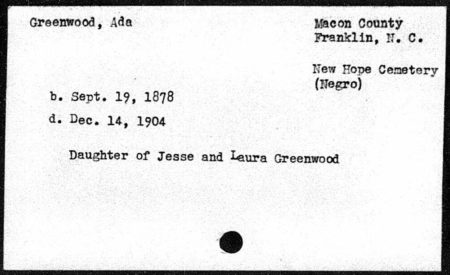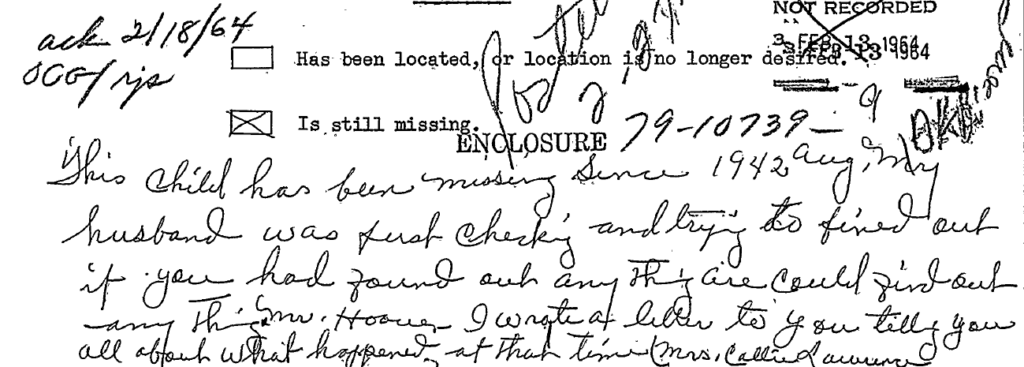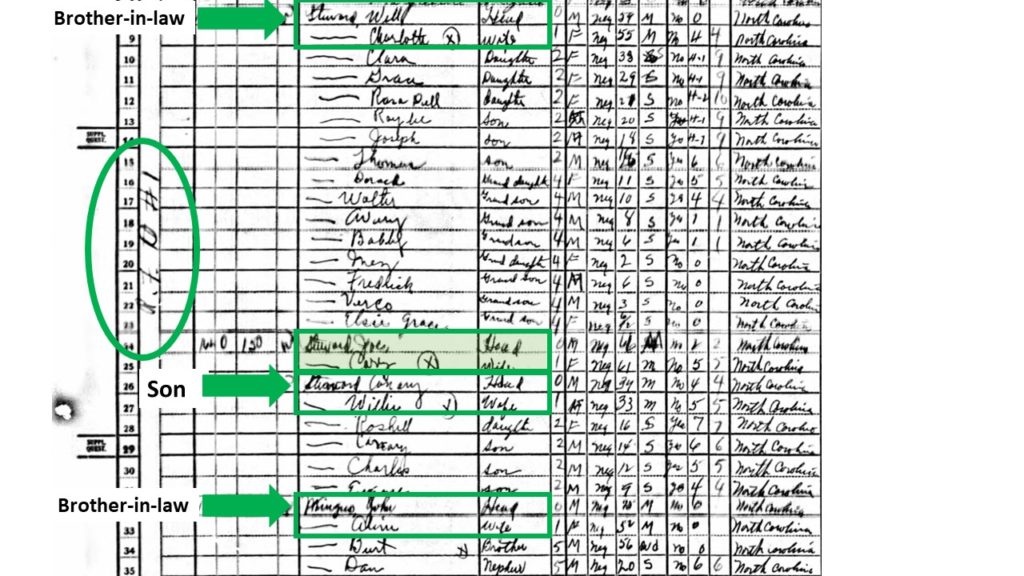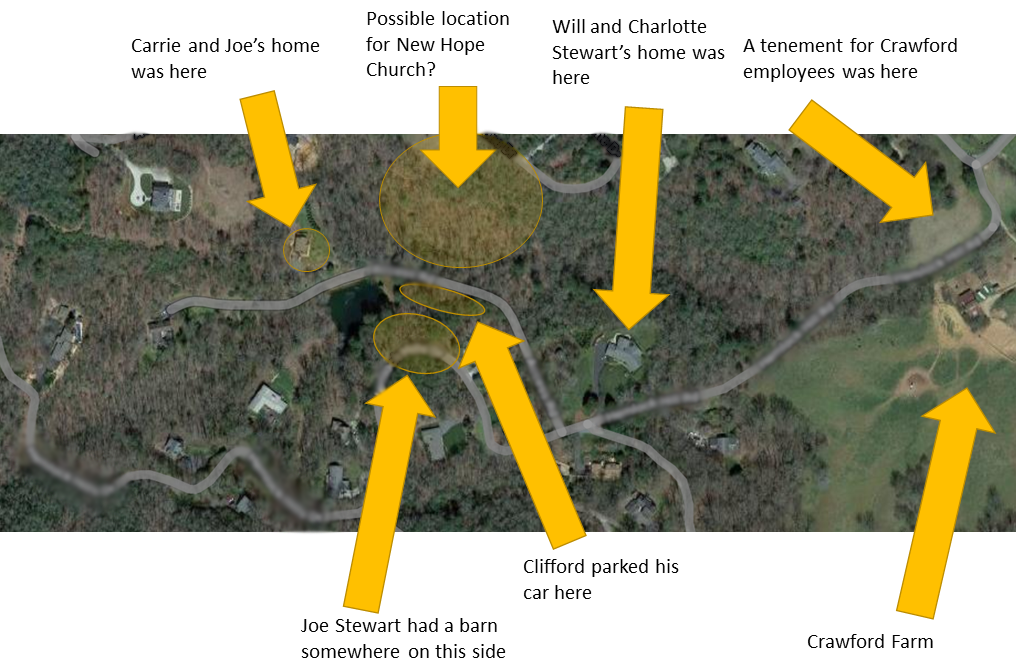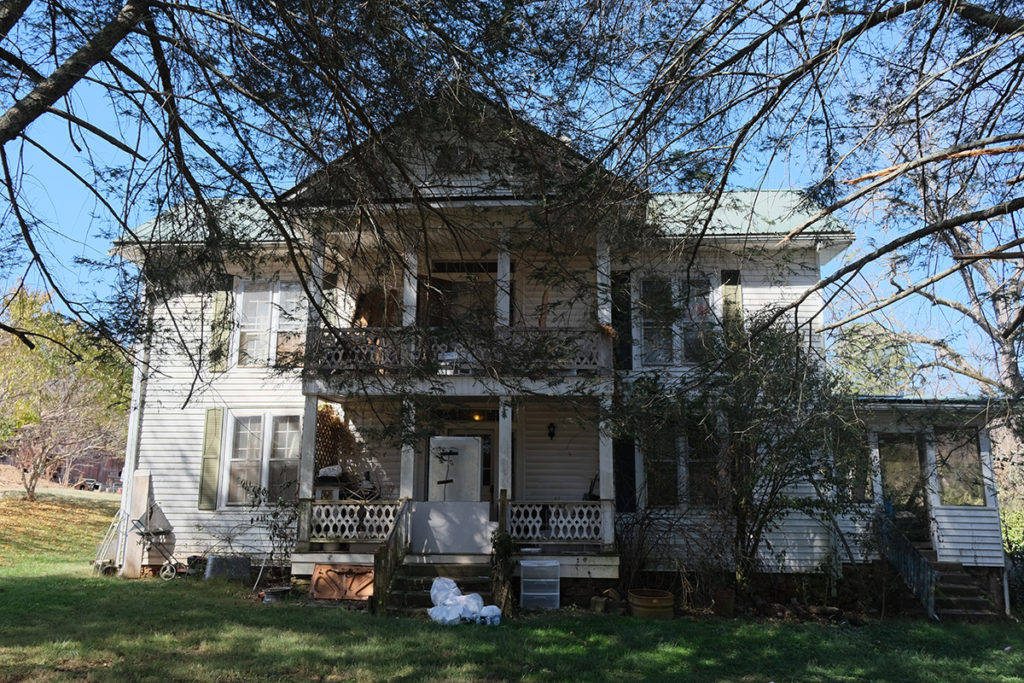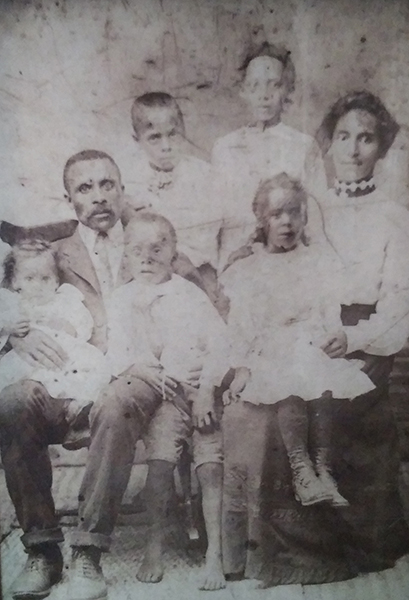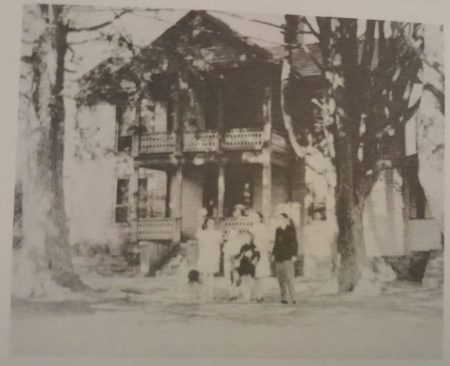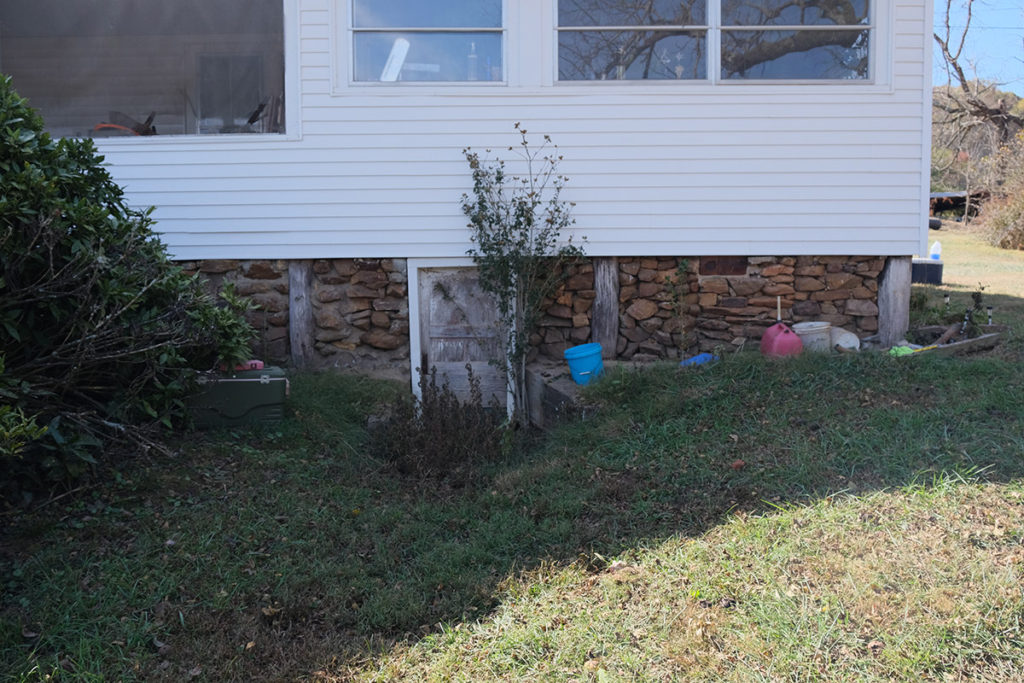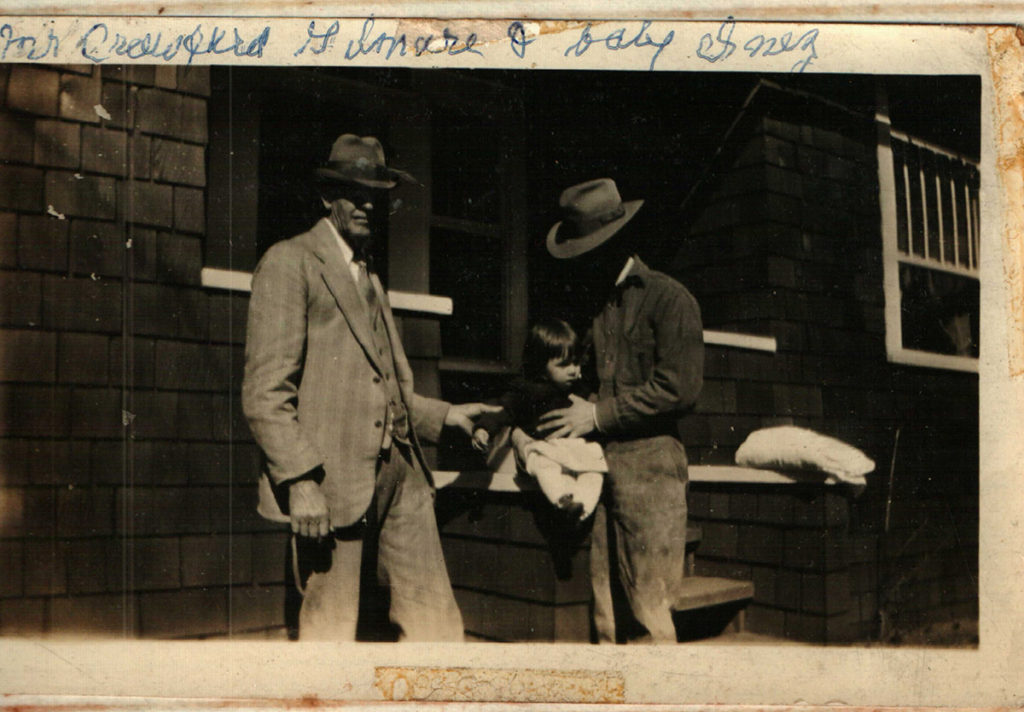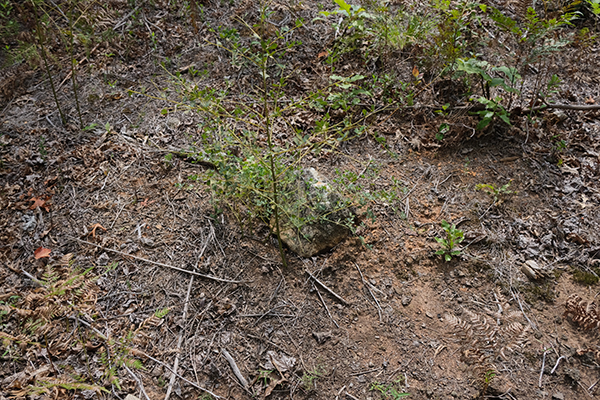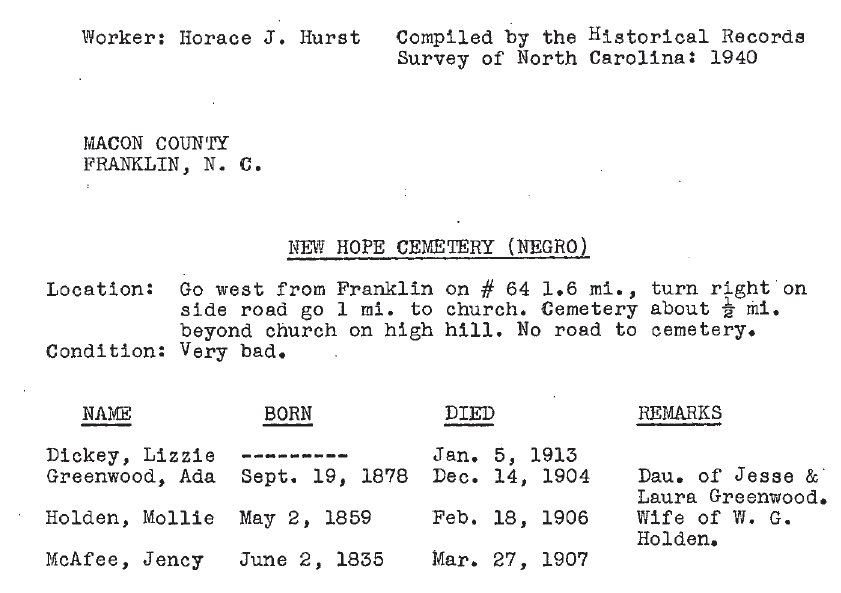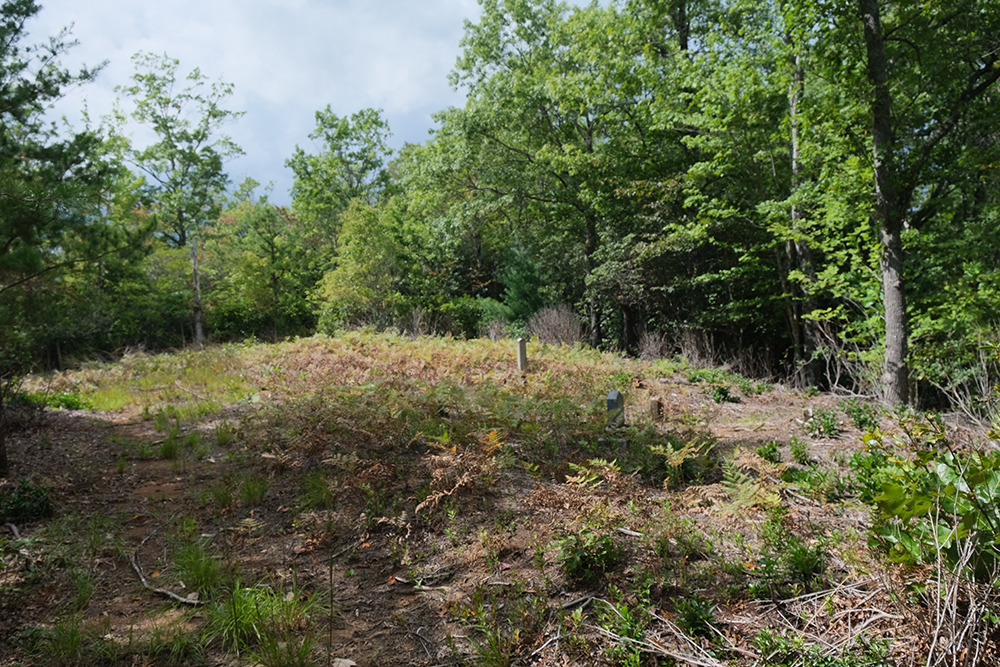New Hope Cemetery: Ada Greenwood (1878-1904)
This series of blog posts entitled “New Hope Cemetery” highlights the individuals who are buried in the Franklin, North Carolina cemetery. After visiting the cemetery for the first time, I wanted to learn more about the people who are buried there. Since then, I’ve started examining records to uncover more about their lives. To learn more about New Hope Cemetery, check out this page and this post.
Below in italics, you’ll find a short fictional piece that imagines a specific moment from that person’s life. After that, I present summary of my initial research findings on each person. While I recognize that it may be impossible to completely piece their lives back together, I hope that these posts will humanize each individual, celebrate their legacy, and emphasize the importance of this cemetery.
Winter had ceased her deluge of snowfall early that crisp morning in January. For the past week, Ada had been buzzing with nervous excitement, upending every nook and piece of porcelain, “fussin’ with things that don’t need to be fussed,” as her mother said. She entered the foyer of her parents’ home, draped in a modest ivory dress. Everyone was there. Ms. Obey, who shivered slightly, covering a light shawl over her delicate shoulders. Her brother, Tom, who beamed at her proudly from across the room. Mr. Stewart, Ed, and a few Harshaw and Greenwood kin. Her father met her in the doorway, nodded encouragingly, and stepped aside so she could join the groom.
Thomas Mozeley.
She breathed an inaudible sigh, relaxing at his easy smile and taking in his familiar scent of mountain laurel and fresh hay. Thomas squeezed her hand gently with a large, rough hand.
Minister Walton cleared his throat. “Now that we are gathered together in this place, let us begin.”
Ada’s headstone is one of the most prominent in New Hope Cemetery, and was the first that caught my eye during my initial visit to New Hope. And rightfully so. At about 3 feet tall, it towered above the fieldstones and peeked over the ferns and other vegetation.
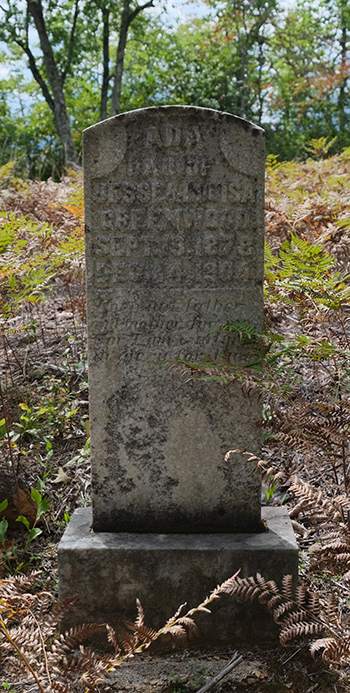
Her epitaph, typed in bold, proud letters, says the following:
ADA
DAU OF
JESSE & LUISA
GREENWOOD
SEPT 13, 1878
DEC 14, 1904
In delicate, cursive font, the inscription, though barely readable, continues:
Weep not father
And mother for me
For I am waiting
In glory for thee
Home Life
Ada was born to Jesse Greenwood (1855-?) and Louisa Harshaw Greenwood (1857-1930) on September 13, 1878. Her family was a small one, with her brother, Thomas, being the only other sibling to survive to adulthood. It seems that their home was often also occupied by a Harshaw cousin. They lived in the Franklin Township.
Her father, Jesse, was from Rabun County, Georgia and her mother Louisa, was born in Hayesville, Clay County, North Carolina. 1 They married around 1876. While her mother took care of the housework, Jesse did farm work, likely working alongside Thomas. Both Ada and Thomas were educated, as they are noted as knowing how to read and write. 2 It’s possible they were educated at one of the local Black churches, such as St. Cyprian’s.
Marriage

When Ada was 18, she married Thomas Mozely (age 20) at her father’s home. Minister C.W. Walton officiated the union. In attendance were Caroline Obee (Obey?), Ed Sanders, and Charles Stewart. Caroline, Ed, and Charles were neighbors and possibly friends of the family.

Thomas may have been from Persimmon, Georgia. In the 1880 census, a 2 year old “Thomas Mozeley” appears in the household of Pinkney and Polly Mozeley, along with two brothers, William and David. 5 Polly, his mother, was from North Carolina and his father, Pinkney was from South Carolina.
Persimmon is located in Rabun County just over the border in Georgia. Ada’s father was also from Rabun County. If this is Ada’s Thomas, wouldn’t it be quite the coincidence if her father had known Thomas’ family?
Where did Thomas go?

During the Summer of 1900, Ada is living at home with her parents, brother, and cousin, Gail Harshaw. This census record marks her age as 19, but she could’ve been as old as 22. By this time, she has been married for 3 years and has not had any children. She’s not working. Her husband, Thomas Mozely, is nowhere to be found. 7
Where did go Thomas go? Did he leave the area to work somewhere else? Did he die? It’s hard to say; so far, I have been unable to find Thomas in any Macon County records after 1898.
Final Years
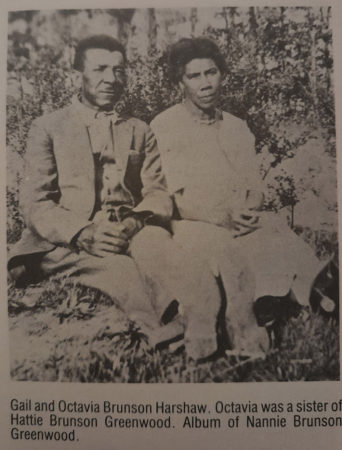
On December 9, 1904, Ada’s mother had an argument with a man named Thomas Leach outside of Porter’s store. It is unclear what they were arguing about, but Louisa was unhappy. According to the newspaper, she was using some colorful language to express herself afterwards. As a result of the conflict, Louisa was fined $1 (about $30 in today’s dollars). 9 10
Ada passed away at the age of 26. While I have come across some records that confirm the date Ada died, I have yet to find anything that tells me details about her death. Local newspaper issues don’t indicate that she experienced a prolonged illness or funeral services. And unfortunately, North Carolina did not formally keep death records until 1913.
It’s hard to not wonder what Ada’s life was like in her final years. How did she spend her days? Was she ill? Did she ever reunite with her husband? Was she happy?
Until more records are uncovered, we may never know.
